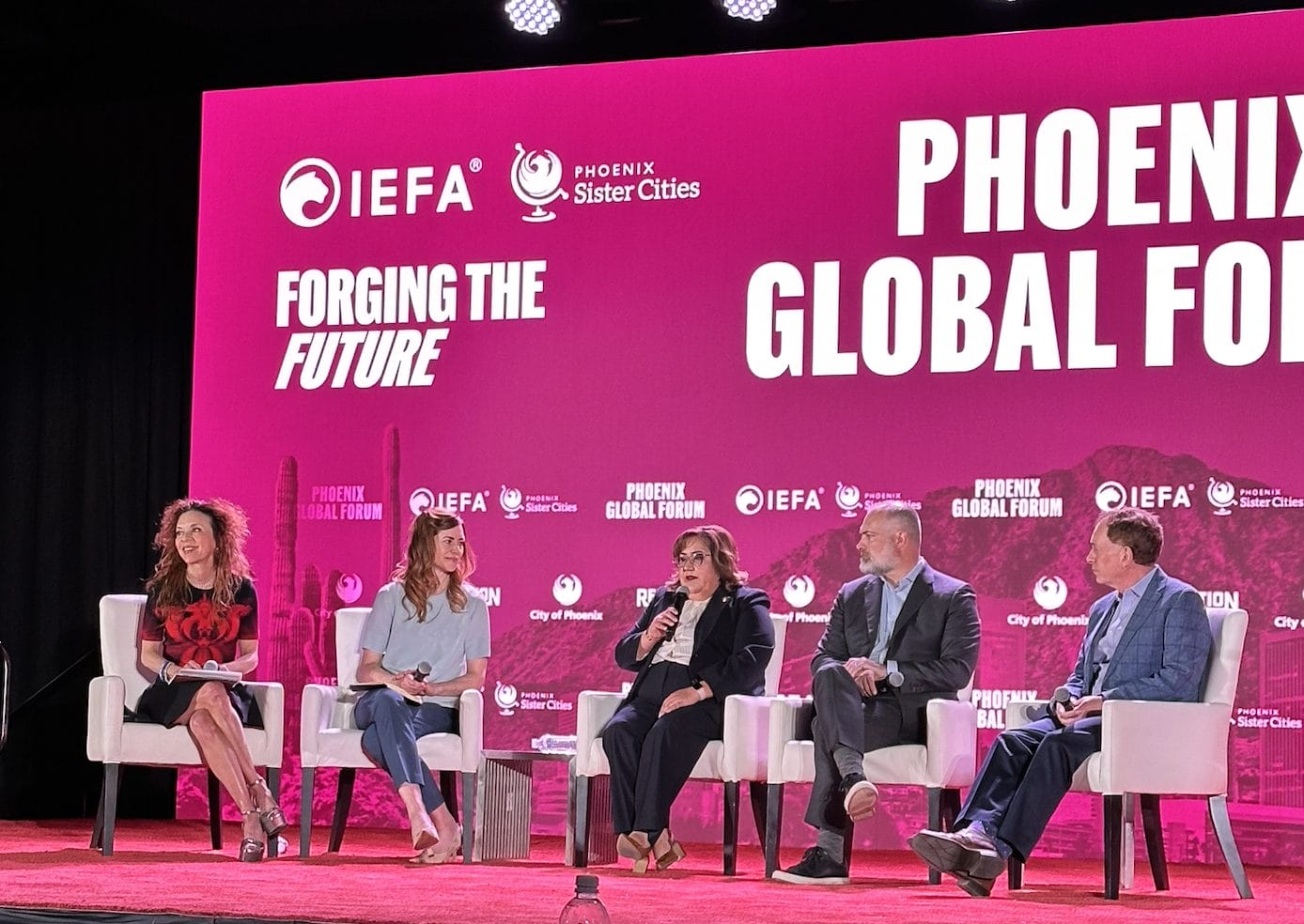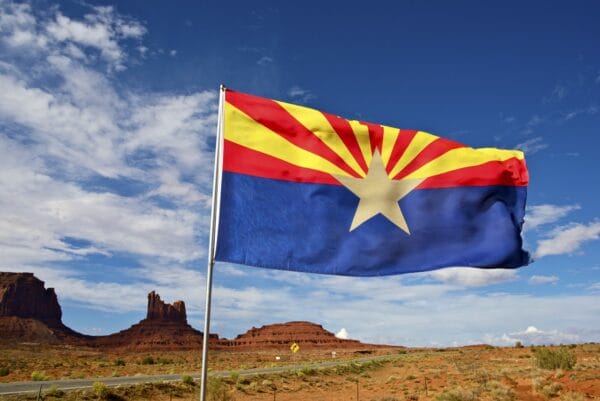(Disclosure: Rose Law Group represents Resolution Copper.)
By Madelaine Braggs | Rose Law Group Reporter
Arizona is at a critical juncture in shaping the future of the global technology economy, anchored by the state’s abundant copper resources. During Tuesday’s Phoenix Global Forum panel moderated by Jordan Rose, Founder and President of Rose Law Group, industry leaders, policymakers, and community stakeholders highlighted the immense potential and the obstacles facing Arizona’s Copper Corridor. Central to the discussion was the Resolution Copper project in Superior, a vast, state-of-the-art underground mine set to redefine sustainable mining and bolster America’s technological and economic security.
The demand for copper, an essential material for electrification, renewable energy, and advanced electronics, is surging globally. Victoria Peacey, President and General Manager of Resolution Copper, underscored this point saying, “By 2030, global demand for copper will triple what we produce today.” Peacey highlighted copper’s unmatched conductivity, critical in energy security, emphasizing the need for a change of course. “We import about half of our copper. We had 24 smelters and refineries until the 80’s and now we have two. This is an area that has seen mining for over 100 years. It’s been in the fabric of the economy for a very long time and the Resolution Copper site is a geologic marvel with 100% copper, which is unusually high.”
SUSTAINABLE & COMMUNITY DRIVEN COLLABORATION
Peacey emphasized their team’s approach to community collaboration, saying, “We have eleven tribes who have ancestral ties to the area, so we all worked together to decide where the mine would be located. The best new mine is one you can’t see. Resolution will be mining underground, and the components will be in a way you can’t see it or notice it. The good part about that is the standard is higher today.”
The collaboration also includes programs that restore native plant species and protect sacred cultural sites through archaeological and ecological surveys, which were meticulously done with 100% accuracy, in partnership with tribal members and elder representatives.
Peacey says, “We must produce copper in a way that society demands of us and be good neighbors.”
Rose asked about the panel about the unique “Good Neighbor Agreements.” These innovative partnerships, developed over more than a decade, ensure proactive engagement and transparency with local communities, especially tribal nations. Mayor Mila Besich of Superior emphasized the importance of these agreements in ensuring community needs guide development. “Our Good Neighbor Agreement keeps us honest and accountable. We wanted to do it differently and for it to last generations to come. My family has been there for five generations and I hope members of my family continue to be involved years down the line to ensure we keep our promises,” she said.
Mayor Besich also emphasized the community’s ambition to become a national leader in mining sustainability education, optimistically saying Superior could emerge as a hub for education and workforce training. With her constituents in mind, Mayor Besich advocates to ensure the economic benefits of the mine stay within the community of laborers.
POLICY ADVANTAGE IN A GLOBAL COMPETITION
Tommy Beaudreau, Partner at WilmerHale, pointed out how historically, the economic returns from projects like this tend to flow out to federal government or spread elsewhere in Arizona, rather than the communities directly impacted. He said, “On any large project economic development, some of it goes to D.C. and people on the ground never see it. This process has been more thoughtful to ensure the communities in Superior see the benefit of the project. We all feel the urgency and the trick is converting that urgency in actual mineral production, dependable sourcing, and economic benefit where it belongs.”
Beaudreau also highlighted recent shifts in federal policy that have encouraged progress in the mining sector. Recent executive orders have explicitly recognized copper as a critical material for national security, marking an unprecedented policy shift and renewed focus on increasing domestic production to break foreign dependency. “An interesting feature of the Defense Protection Act (DPA) is trying to address the investment and capital side,” Beaudreau said. The DPA is a post World War II statute meant to enable the federal government to quickly mobilize industry to meet national security imperatives. “Part of what the Trump admin has done, is define the need for critical minerals as a national security imperative, amongst other things, in hopes to unlock those authorities. What the act can do is provide funding opportunities for the industry to help offset those advanced significant capital outlays that are necessary to bring a significant mining project online.”
Another feature is offtake and using the federal government as a customer. “It allows the DOD to provide offtake agreements, leans, and loans in order to give certainty to mining operators, so they can advance projects into production,” said Beaudreau.
Morgan Bazilian, Director at the Payne Institute for Public Policy at Colorado School of Mines, highlighted Arizona’s opportunity within a global context, stressing that America’s competitiveness in technology and clean energy hinges on securing reliable domestic copper supplies. “It’s a once in a millennia inflection point for the mining industry globally. As one of humankind’s oldest industries, it’s been demonized for the last hundred two hundred years… by communities and environmental organizations,” Bazilian said. “Now it’s very clear that these metals are fundamental to our modern economy and becoming more so. Changing that narrative from mining to as a dirty industry to one that is supplying affordable clean and modern and robust vibrant economy is the key.”
Bazilian also elaborated the global tensions exacerbating the urgency to break foreign dependency, noting we import 80-100% of many critical minerals, and the ongoing economic trade war, especially regarding critical minerals, is ramping up dramatically. Just this week, China placed new export controls on rare earth minerals, a move that significantly escalates anxieties and underscores our vulnerability. The volatility triggered by tariffs and export restrictions has created profound market uncertainty, intensifying the push for reliable, domestically sourced copper.
He continued, “We have a global imperative to do something… It’s been a distinct power battle raging the last ten years, but it’s just getting worse and worse… On a national level, it’s very clear we want to see the us dominating in the U.S. While it’s hard, I’d like to see us at least improve proficiency.”

LOCAL ECONOMIC IMPACT
Bringing the focus back home, Peacey noted the substantial opportunity for economic impact in Arizona, highlighting Resolution Copper’s current employment of around 350 individuals, predominantly local residents. She says these numbers will rapidly scale up during construction phases, bringing billions of dollars in economic impact annually, plus substantial wages, job creation, and tax revenues. Resolution Copper proves mining can be friendlier on the environment with its low water usage facility. Peacey says they provided seven billion gallons of surplus water to local farmers, emphasizing their commitment to sustainable resource management.
Rose closed the panel asking them for their candid feelings about the state of copper and the Resolution Copper Project in general. The general sentiment was optimism and urgency. Mayor Besich described the community as “excited, hopeful, and ready to lead,” while Peacey underscored the intergenerational impact, “It’s about families remaining in the Copper Corridor, and rebuilding the glory that used to exist in this forgotten part of Arizona, that will hopefully not be forgotten any more.” Beaudreu said he would like to see Arizona mining serve as a “model or a template for a path that can help unlock additional mines and give people a new perspective.”








